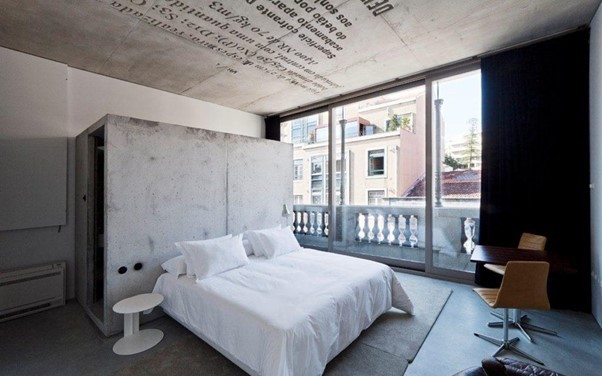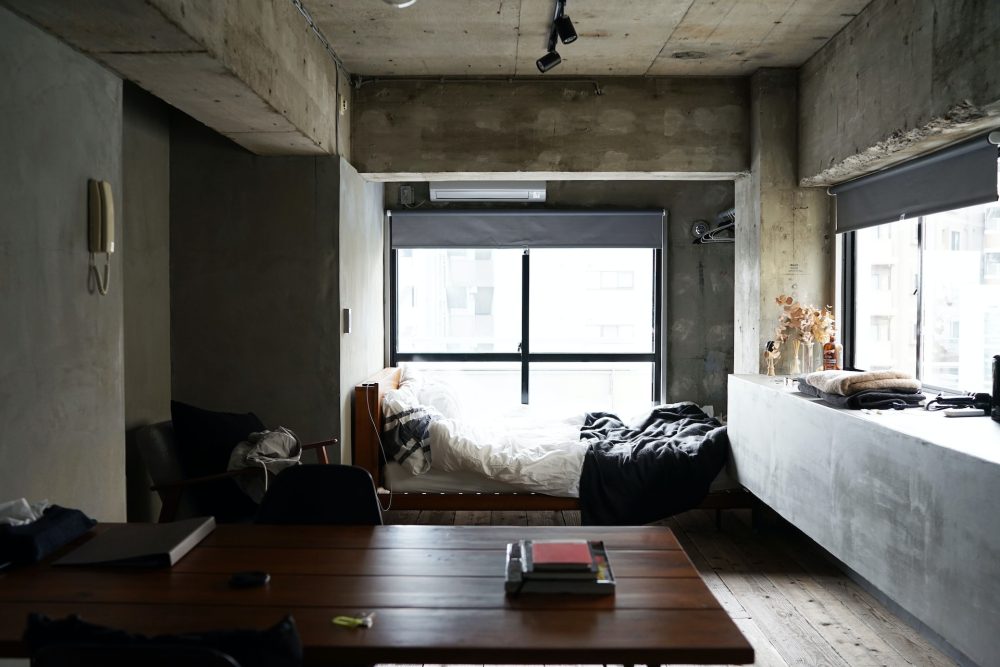Is concrete at home only a bold aesthetic decision reserved for lovers of raw, industrial style? It turns out that concrete, or rather its modern equivalent – micro concrete, also known as microcement or beton cire – is gaining more and more followers in interior design. Thanks to its versatility and unique properties, micro concrete makes it possible to achieve the effect of concrete in virtually any room, and in a much more functional way. In this article, we take a closer look at this fascinating material and how it can be used in different parts of the home.
What is microcement?
Before we begin to review the specific applications of beton cire in the home, it is worth understanding exactly what this material is and why it has become such a popular choice among designers and homeowners. Microcement is a composite consisting mainly of high-quality cement and polymeric resins. These two main ingredients combine the strength and durability of cement with the flexibility of resin, making it an extremely versatile material. It can be used on floors as well as walls, and even on furniture and other decorative elements, thanks to its ability to be applied in a thin layer. Not only does it combine the best properties of its ingredients, but it also eliminates their disadvantages, such as the susceptibility to cracking in the case of traditional cement.
Aesthetics and practicality of micro concrete in interior design
The aesthetics of micro concrete in interior design deserve special attention. Its heterogeneous structure, sometimes with subtle scorch marks, resembles traditional concrete, adding character and authenticity to rooms. What’s more, microcement offers a wide range of colours, from austere greys to warmer hues, so it can be adapted to almost any design concept. The material’s texture, which can be felt under the finger, is also a unique advantage, adding depth and complexity to any surface. Compared to traditional concrete, Beton cire has additional advantages: it is waterproof and less susceptible to stains, making it an ideal choice not only in living rooms, but also in kitchens or bathrooms. In addition, its thin layer makes it possible to apply it to a variety of surfaces, including furniture, which is an interesting option for those looking for original solutions in interior design.

Diversity of microcement applications
One of microcement’s greatest strengths is its versatility. It is not only a floor covering material; it is also used on walls, ceilings and stairs. What’s more, unlike traditional concrete, micro concrete is available in a wide range of colours. Thanks to its water resistance, it also works well in bathrooms and other areas exposed to moisture. Beton cire’s thin-layer application opens up new possibilities, allowing it to be used even on furniture, an interesting option for lovers of original interior design solutions.
Micro concrete application process
In achieving the perfect concrete effect in a home using micro concrete, the correct application of the material plays a key role. The process can be broadly divided into three main steps: priming, applying a layer of microcement and varnishing. Priming prepares the surface and ensures better adhesion. Next, applying the layer of beton cire requires precision and skill to achieve the desired visual effect. The final stage is varnishing, which protects the surface and gives it the desired properties, such as water resistance or abrasion resistance. The whole process requires not only precise execution, but also the use of quality products.
Where can you use microcement in your home?
Micro concrete is an extremely versatile material, which makes it applicable to a wide variety of living spaces. From bathrooms, where water resistance is key, to the kitchen, where stain resistance and ease of cleaning are valued, to living rooms and bedrooms, where aesthetics play first fiddle. Microcement can also be successfully used in areas such as lobbies, hallways or even on stairs. Its versatility and numerous advantages make it the ideal choice for those looking for modern and functional interior design solutions.
Practical applications and easy care
The practical aspect of using microcement should not be overlooked. It is an exceptionally easy-care material, which is particularly important in high-traffic areas such as corridors and kitchens. Unlike traditional flooring, beton cire does not require complicated maintenance. Regular cleaning and possibly renewing the protective layer every few years is all that is needed to keep the floor or wall looking like new. This is also another argument in favour of using microcement in different parts of the flat, especially those that are prone to wear out more quickly.

micro concrete in the Casa do Conto Hotel, Porto, Portugal
Read more: https://www.festfloor.com/
Photo by Joseph Albanese on Unsplash










